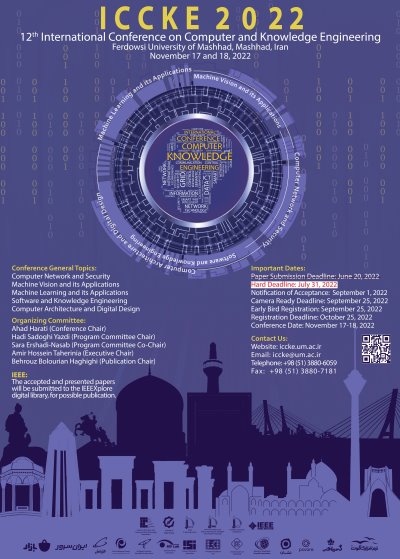0% Complete

Authors :
Keywords :
Abstract :
List of archived papers
Maryam Fattahi Vanani - Hamidreza Shayegh Borujeni - Ali Nourollah
Theophilus Ebuka Odoh - Aliyu Sabo - Hossien Shahinzadeh - Noor Izzri Abdul Wahab - Farshad Ebrahimi
Narjes Heidari - Javid Norouzi - Mohammad Sadegh Helfroush - Habibollah Danyal
Fatemeh Nasiri - Mohsen Hooshmand
Sajad Haghzad Klidbary - Anahita Babaei - Ramin Ghorbani
Mohamad Hossein Maghsoodi - Mohamad Khansari
Mina Abroodi - Mohammad Reza Keyvanpour - Ghazaleh Kakavand Teimoory
Zahra Bakhshandeh - Morteza Keshtkaran
Hossein Shahinzadeh - Zohreh Azani - Sundus F. Al-Hameedawi - S. Mohammadali Zanjani - Saiedeh Mehrabani-Najafabadi - Mohammadreza Hemmati
Amirhossein Khajehpour - Farid Zandi - Navid Malekghaini - Mahdi Hemmatyar - Naeimeh Omidvar - Mahdi Jafari Siavoshani




